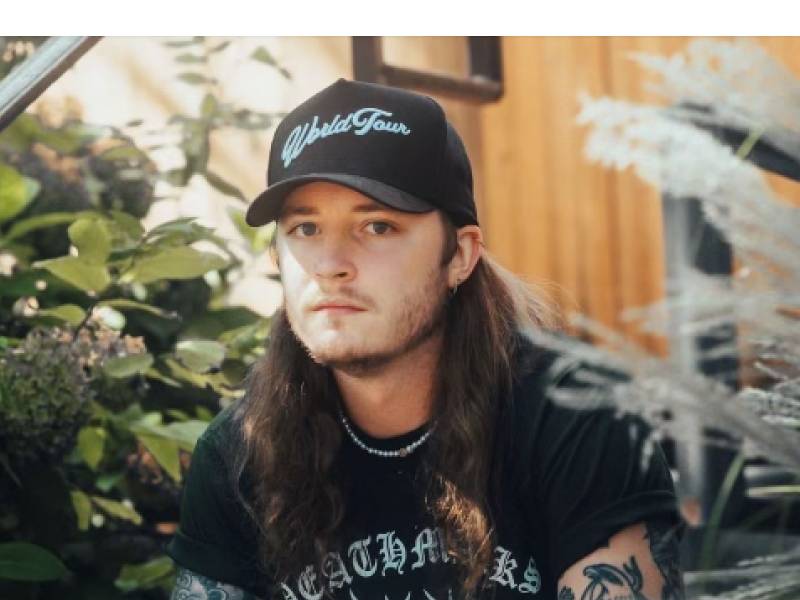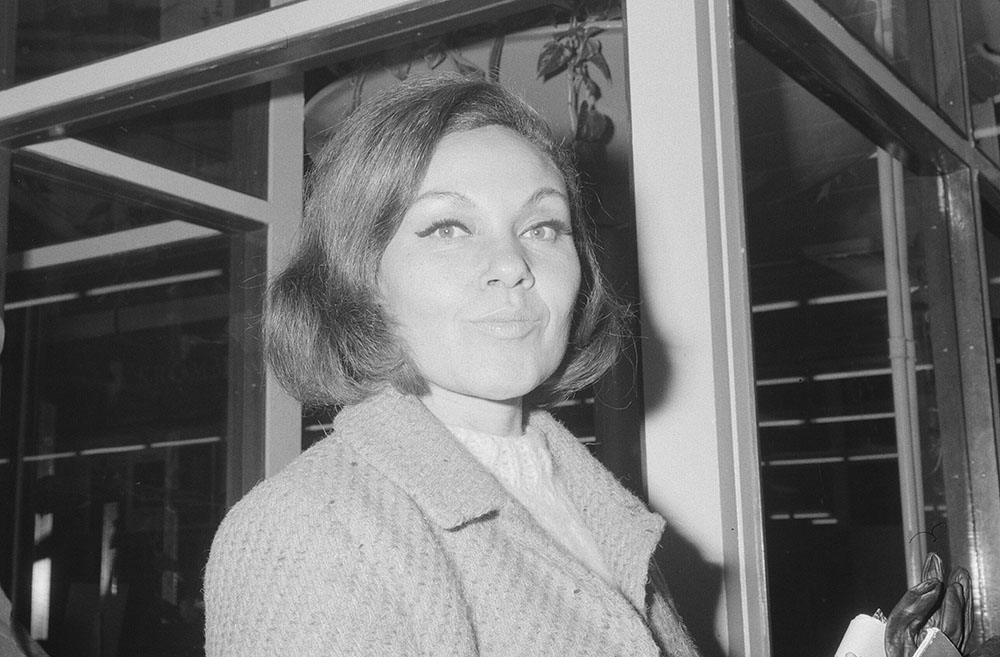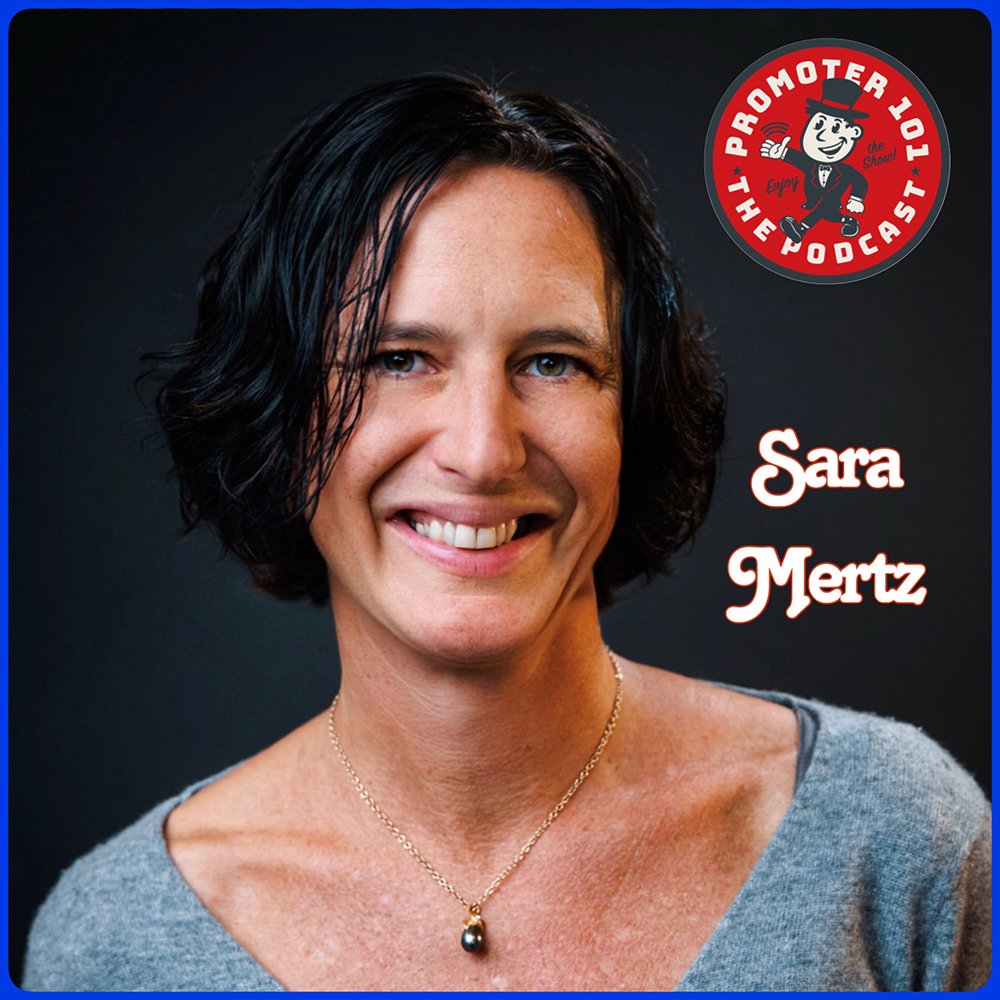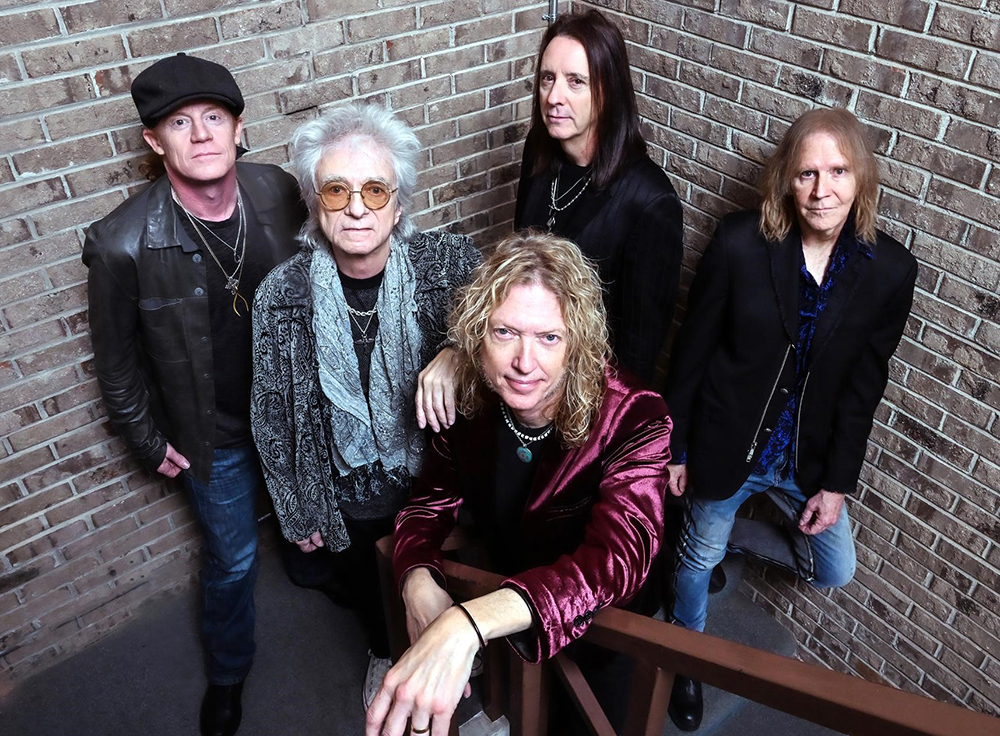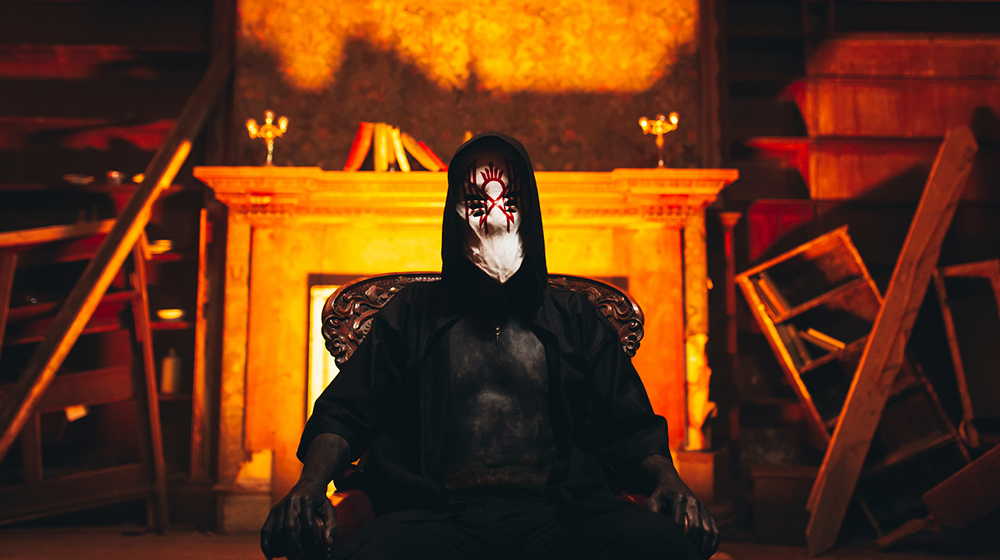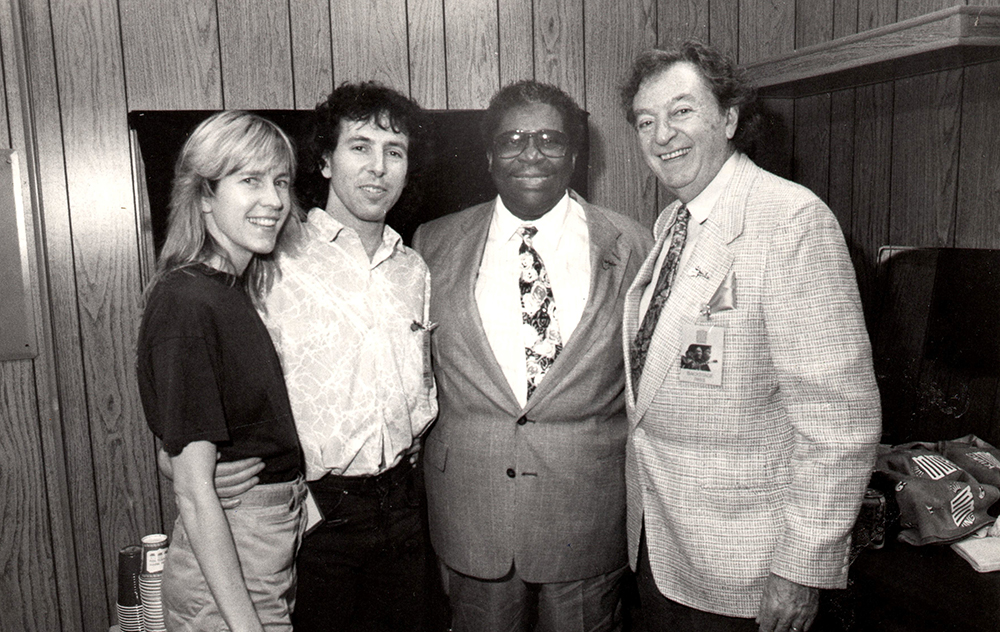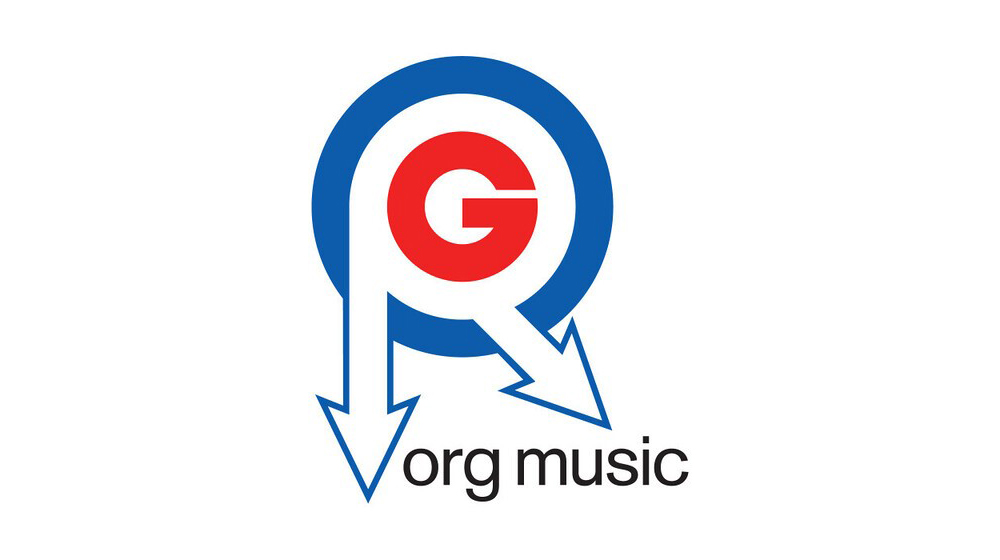This week In the Hot Seat with Larry LeBlanc: Robert Deaton, executive producer of the CMA Awards, & producer of “Stoned Cold Country.”
Robert Deaton is a much-loved and respected individual who leads an extraordinary life.
Deaton has notably served as the executive producer of the CMA Awards on ABC-TV since 2007.
In 2021, the Country Music Association extended its long-standing partnership with Deaton which includes the annual CMA Awards in addition to “CMA Fest,” and “CMA Country Christmas.”
The new pact will see the highly respected television producer and award-winning director in the CMA producer’s chair through 2026.
Earlier in the same year, the CMA renewed its contract with its network television partner ABC-TV also through to 2026.
Deaton also currently serves as executive producer of the Billboard Music Awards on NBC-TV.
Deaton is in such high demand because he delivers.
As Garth Brooks said when the CMA extended Deaton’s contract for its television properties, “Any gig you have with Robert Deaton, you know, as an artist and as a viewer, it’s gonna be killer. I have had the great fortune of sharing some magical moments throughout the years with Robert. He is a gift to all of us within Country Music and beyond.”
One of Deaton’s first professional jobs in Nashville after leaving Fayetteville, North Carolina was as a 19-year-old production assistant on a Crisco commercial with Loretta Lynn at her ranch in Hurricane Mills, Tennessee. The next week he did some work at the historical RCA building in Nashville’s Music Row with singer/guitarist/actor Jerry Reed.
Deaton then thought, “I have made it.”
After a stint in the local freelance film community, Deaton got offered a job at Knight Ridder Broadcasting’s ABC affiliate WKRN-TV 2. He was in the news department for the first year, and then he worked in the marketing department. for the next couple of years.
His production work eventually gained national media exposure, airing on such programs as “Good Morning America,” “The Phil Donahue Show,” and “ABC News,” to name a few.
In 1985, Deaton and George Flanigen co-founded the full-service film production company, Deaton Flanigen Productions. Together, they compiled an impressive catalog of 500 music videos, including for Martina McBride, Faith Hill, Alabama, Brooks & Dunn, Kid Rock, Kiss, Gretchen Wilson, Rascal Flatts, Reba McEntire, Carrie Underwood, Diamond Rio, and many others.
The pair produced and directed national commercials, music videos, and internationally distributed concert video projects for such clients as The Walt Disney Company, ABC Sports, “Live with Regis & Kelly,” “Who Wants To Be A Millionaire,” NBC, Warner/Reprise, The RCA Label Group, MCA Records, Arista Records, and the Los Angeles Lakers.
Deaton Flanigen Productions received a handful of prestigious national and regional awards before the two dissolved their partnership a decade ago.
Meanwhile, Deaton had become a two-time Emmy winner with the “Are You Ready for Some Football?” opening for ABC’s “Monday Night Football.” He also produced “Sports Illustrated: 50 Years of Beautiful” on NBC, as well as the “Soul2Soul” Las Vegas residency for Tim McGraw and Faith Hill in 2013. He was also executive producer of “The Passion” (2016) with Tyler Perry for Fox Broadcasting.
Long fascinated by the Rolling Stones, and their country-styled “Wild Horses” and “Dead Flowers” roots, and with a deep love of authentic country music (alongside an appreciation of all things Dolly Parton and Tammy Wynette) that hearkens back to growing up on the music of Hank Williams, Ray Price, Willie Nelson, Buck Owens, Merle Haggard, Jerry Lee Lewis and other stars of the Grand Ole Opry from a young age, it was a natural moment for Deaton to come up with the concept of the Rolling Stone country music tribute album, “Stoned Cold Country,” released on March 17th on BMG.
After all, hearing Ronnie Milsap’s electrifying 1976 live cover of “Honky Tonk Women,” Deaton had believed it to be, “one of the greatest country music songs of all time.”
“Stoned Cold Country” was born over “three bottles of white wine” at Angelini Osteria in Los Angeles with BMG CEO Hartwig Masuch as Deaton’s dining companion. Masuch enthusiastically approved the album’s concept.
Over the course of the “Stoned Cold Country” sessions, Deaton worked intensely with artists, and with an army of nearly 70 Nashville studio musicians, including associate music producer and guitarist Danny Raderl, and Chuck Leavell, the Stones’ longtime piano player, in shining a light on the Stones’ country influences as well as on country music at large, but more specifically on some of its most maverick contemporary artists.
Featuring Eric Church, Steve Earle, Little Big Town, the Zac Brown Band, Brooks & Dunn, Brothers Osborne & The War And Treaty, Lainey Wilson, Jimmie Allen, Elvie Shane, Ashley McBryde, and Elle King, the 14-track set is a raucous salute to the British group’s 60th anniversary.
Early releases from “Stoned Cold Country” have included: Jimmie Allen’s impassioned rendition of “Miss You”; “Sympathy for the Devil” by Elvie Shane; “You Can’t Always Get What You Want” by Lainey Wilson; and “It’s Only Rock ‘N’ Roll (But I Like It)” by Brothers Osborne & The War And Treaty.
While Deaton shrugs off talk about his tenure as country music television’s most storied name and downplays the “buzz” of getting Mick Jagger and Keith Richards to sign off on the “Stoned Cold Country” project, you can tell he truly loves what he does.
You are a guy who could easily wear a T-shirt proclaiming, “Reinvent yourself!”
Thank you. I appreciate that comment because that is all that I’ve tried to do. I think part of the reinvention is to just always move creatively and be doing stuff that I have never done before.
How have you been able to do all the things you’ve done in your career while being a husband and raising three children?
I’ll tell you how. I don’t have hobbies. Sometimes I use that as a joke, but it’s true. I don’t play golf. When my kids were growing up, I made sure that I went to all of their baseball and football games. My son is a drummer, so I was always going to buy him another piece of his drum set. So it is about family, and it is about the work because what I do, I love more than anything. I love our (country) community, and I can’t remember a day, even when I was a kid, that I didn’t always know what I wanted to do. The day after I graduated from high school, my bags were packed. My car was packed.
Where did you go?
I drove to Nashville. I wanted to be here.
You really wanted to get out of Fayetteville, North Carolina?
I did. They called it Fayettenam back in those days. I grew up near the military base (Fort Bragg). I loved growing up in Fayetteville.
During the Vietnam War in the 1960s, the 500 block of Hay Street in Fayetteville was notorious for crime. Bragg Boulevard was populated by strip clubs and crime was rampant in the ’70s and ’80s. Fayetteville rappers J. Cole (with “Land of Snakes” in 2013), and Morray (with “Trenches” in 2021) have each referenced Fayettenam.
Growing up in North Carolina, your father worked in radio and television. He was a celebrity anchor at WECT-TV, Channel 6 in Wilmington. He hosted a Friday night country music show that Grand Ole Opry cast members would perform on if they were in the area.
That’s true. My father, when we lived in Wilmington, North Carolina, did have a country music television show on Friday nights. Back then there were what four television stations? The major networks and PBS. People didn’t necessarily know the difference between something that was local, and a show that was all over the country. Well, he had “The George Deaton Show” every Friday night, and I was on the show as a square dancer.
Artists at the time came up through the touring system.
There was very little routing back then. They just booked the dates and got on the bus.
At 6, you sat alongside Jerry Lee Lewis as he performed. At 12, you were running around backstage at the Grand Ole Opry. From an early age, you met all of the country artists of the day.
I was. I grew up with these great artists and although I was little, I was going backstage and hanging out with the artists. I met Buck Owens and Charley Pride. I’m sure part of me was a nuisance. I had questions. It was just fascinating to me, meeting the stars of the Grand Ole Opry. Back then the Grand Ole Opry laid out an annual event with pictures, and cards with who the artists were, I collected those.
My favorite country album of all time is still Buck Owens (and his Buckaroos) “Live at Carnegie Hall” (which reached #1 on the Billboard Country Album chart in 1966). I think the reason is that the sound of that record, it reminded me of being back in the (TV) studio when I was little. And that is what it sounded like then.
In his Allmusic review of the “Live at Carnegie Hall” album, critic Stephen Thomas Erlewine wrote: “Owens and the Buckaroos had to deliver a stellar performance, and they did—the group sounded like dynamite, tearing through a selection of their classic hits with vigor. Several decades removed from the performance itself, what really comes through is how musical and gifted the Buckaroos were, particularly Don Rich.”
In the past, I worked as a researcher for Canadian actor and radio host Don Harron who was a member of the “Hee Haw” cast. I spent considerable time around Buck Owens during a 10th anniversary “Hee Haw” show in 1978. He took a shine to me because of a story I told him about meeting “Dangerous” Don Rich who had passed away only four years earlier in a motorcycle accident.
In 1969, I had met the Buckaroos in Toronto at the Canadian National Exhibition. At Don’s request, I had walked him and the Buckaroos, all in their Nathan Turk Western-wear suits, through the midway to lunch on a Canadian specialty, peameal bacon (a wet-cured, unsmoked back bacon made from trimmed lean boneless pork loin rolled in cornmeal).
I wish Larry that Don was in the…Don needs to be in the Country Hall of Fame in my opinion. He is the greatest high-harmony singer of all time.
What’s telling about the country music artists of the 1960s and 1970s is that so many of them were adept at working on television, which was a primary way for them to become better known. Other than appearing on the Grand Ole Opry radio show, there were all these regional country television shows around America, such as “Flatt and Scruggs’ Grand Ole Opry Show,” “Billy Walker’s Country Carnival,” “The Arthur Smith Show,” “The Porter Wagner Show,” and “Town Hall Party,” as well as “The Spade Cooley Show.” and “Cal’s Corral.” in Southern California.
Country artists of the 1960s and 1970s knew how to work TV cameras, and they knew about studio lighting. They were able to perform in one take and be on their way.
Yes. If you think about it Larry, as I said my dad had the regional television show every Friday night. So if the Grand Ole Opry stars were in town or if some of them were traveling through, they always made sure that they were on the show. But if you also remember back then, and I don’t know if people remember, within those years there was a lot of television going on. There was “Pop Goes The Country” hosted by Ralph Emery, and “The Porter Wagner Show, and I don’t know if you remember a show in Charlotte, North Carolina, there was Arthur Smith, and he had a television show. “The Arthur Smith Show” (circa the 1960s, filmed at WBTV).
Arthur “Guitar Boogie” Smith was best known for “Guitar Boogie” (aka “Guitar Boogie Shuffle”) which he recorded in 1945. An early example of hillbilly boogie, it was a link between 1940s Western swing and honky-tonk and 1950s rockabilly. By 1949, “Guitar Boogie” sold over three million copies, and reached #8 on the Hot Country Songs chart, and #25 on the Billboard Hot 100 chart.
In 1957, Smith founded the first commercial recording studio in the Southeast In Charlotte. He produced radio and television shows for a number of other artists, and he produced and hosted his own radio program, “Top of the Morning,” which was syndicated for an unbroken span of 29 years. In the 1970s, Smith produced a weekly, 30-minute program syndicated in more than 90 TV markets at its peak.
There were all of these syndicated country shows at the time. Bill Anderson had his television show (“The Bill Anderson Show,” which was taped in Canada and Nashville in the mid-60s.) Television for artists back then, that was the way to get to people. I remember when I was a kid I would go to a gymnasium in a high school to see Buck Owens. It wasn’t like they were playing big huge arenas, but they could get to people by the way of television. I love seeing all of those old shows and all those artists.
A lot of TV talent has come from Nashville. Few people today talk about producer, music arranger, and music director Bill Walker.
Right, all that stuff for TNN.
He was Johnny Cash’s musical director (for ABC-TV “The Johnny Cash Show” which ran from June 7, 1969, to March 31, 1971. When Johnny Cash would say, “Goodnight Bill Walker,” the camera would zoom down to Bill Walker.
Australian-born Bill Walker holds a distinctive seat in popular music. In the ‘60s, he worked for RCA Records in South Africa, recording visiting RCA artists from the United States. When Jim Reeves came to South Africa to film “Kimberley Jim,” Walker was hired to write the score.
He also recorded Floyd Cramer, Duane Eddy, and John D. Loudermilk while in South Africa.
You are one of a handful of people I know who has extraordinary respect for heritage country, and a mutual respect for the newer contemporary country artists, particularly the nonconformists.
There was a time when many country radio broadcasters in North America avoided promoting themselves as country. They absolutely steered clear of identifiable country artists while favoring pop country acts.
But I’m like you.
If you are a country fan, you are a country fan; and some of the heritage acts should be considered in the context of being like our aunts and uncles. Neither of us has issues with Americana, bro country, Country Pop, Country Rock, Rockabilly, Cowboy, or edgy country artists like Hank Williams Jr., Steve Earle, or Eric Church. It is what it is.
Yeah, I agree. I accept all of those. I feel that it’s unnoticed, but country music has always been a lot of things. When I grew up hearing Merle Haggard doing “Working Man Blues” on the radio, it was at the same time you could hear Eddie Arnold doing “Make The World Go Away” or Don Gibson singing “Oh, Lonesome Me.”
We have always had different styles of music under what we call the country music banner. For example, I love listening to Tim McGraw or Chris Stapleton who is an unbelievably incredible vocalist, but I also love Dan + Shay who are equally amazing vocalists. I just love all that, and I feel that we should embrace all that because, as I said, that is what country music has always been.
You’ve worked extensively with Hank William Jr. over the years. I’m a big fan, and I was a friend of his late manager Merle Kilgore. I can remember a time when country radio backed away from “that shit kicker country stuff” to focus more on going uptown toward Country Pop.
Heck, country was always going uptown, aka “Countrypolitan,” back with Ray Price in the ‘60s, and Crystal Gayle and the smooth Nashville Sound in the ‘70s.
Nothing has changed.
Yeah, it’s funny, and it’s interesting. Every time that we start getting away from country music, there is some artist like Ricky Skaggs that turns us back to who we are.
When I was growing up, I didn’t know that Hank Williams Sr. was country. I knew that Ernest Tubb, Ray Acuff, Cowboy Copas, and Kitty Wells were country. But Hank was on Hit Parade stations, and his music was on almost every jukebox in our neighborhood.
Ray Price was in the same vein. He was like that too. Some people didn’t know that they were listening to country music when they were listening to Ray Price or Patsy Cline.
In the 60s, Ray consorted with violins, even recording and touring with small orchestras. Grand Ole Opry executives threw a fit when Ray appeared, but he had a #1 hit in 1970 with Kris Kristofferson’s “For the Good Times,” a song which won him a Grammy, and which returned him to the top of the country charts after a nearly 11-year absence.
You know that it wasn’t until 1996 that Ray Price was brought into the Country Music Hall of Fame? With over 100 country charted hits, he should’ve been inducted years earlier. From his landmark 1956 recording of “Crazy Arms” to such hits as “Faded Love,” “Heartaches by the Number,” and “Release Me,” his contribution to country music is undisputed, despite his Countrypolitan orchestration.
It’s so true. Or Johnny Cash putting horns on “Ring of Fire.” But again the country music genre is so many things. The genre has so many different styles and types of artists. I think that is what makes country music so strong.
Co-written by June Carter, and Merle Kilgore who was also a singer, songwriter, radio host, and actor, Johnny Cash’s 1963 hit “Ring of Fire” was originally recorded in a folk style by Carter’s sister Anita, but Cash liked the song, and in a dream, he heard it with the Mexican-style horns that he incorporated into his version.
Can I say one thing, Larry? You and I are bonded because Merle Kilgore was one of my dearest friends.
Hard to believe Merle has been gone for 17 years. He was a bigger-than-life character. I once went up to see him in Paris, Tennessee, where he was living and working with Hank Jr. We go out to lunch locally to have chicken because his wife Judy had him on a diet. We get to the restaurant, and they had run out of chicken for the day.
(Laughter) That’s funny. You know that I worked with Hank Jr. for 7 years doing the opening for ABC’s Monday Night Football.
That you twice won an Emmy for.
I sure did. Merle Kilgore was one of a kind. There’s nobody like him, close to him since then. Just truly an amazing human being. I loved him,
Merle and I bonded when he was in Toronto attending a TNN function at the Hockey Hall of Fame. We talked of the late country icon Johnny Horton. I then sang him “Johnny Reb” a Confederate soldier’s song he wrote that was popularized by Johnny Horton in 1959.
“Cause you fought all the way, Johnny Reb, Johnny Reb
You fought all the way, Johnny Reb
I heard your teeth chatter from the cold outside
Saw the bullets open up the wounds in your side
I saw the young boys as they begin to fall
You had tears in your eyes, ’cause you couldn’t help at all
But you fought all the way, Johnny Reb, Johnny Reb
You fought all the way, Johnny Reb.”
A revitalized brand identity has been crafted around country music in recent years.
Sarah Trahern, the dynamic CEO of the Country Music Association (CMA) often refers to country music as being “the biggest tent.” Not only has the CMA taken the lead of late in the country sector’s ambitious initiatives addressing racial and gender inequality, and even gender inclusion, but also in better preserving the genre’s legacy.
I love that you pieced Broadway and film star Jennifer Hudson and Chris Stapleton together at the CMA Awards in 2021, performing a medley of Willie Nelson’s “Night Life,” and “You Are My Sunshine” (co-written by Charles Mitchell, and two-time governor of Louisiana, Jimmie Davis) from Aretha Franklin’s catalog.
That was one incredible TV moment.
That was truly incredible. We were blown away by that. Jennifer wanted to meet me when she was doing a screening of (the 2021 film) “Respect” here in Nashville at The National Museum of African American Music. One thing led to another, and I didn’t realize at the time how many country songs Aretha had recorded. So I was like, “There’s a connection.” And that’s how we ended up putting Jennifer and Chris Stapleton together.
Well, after all, your three favorite singers are Tammy Wynette, Ella Fitzgerald, and Natalie Cole. So Jennifer Hudson would be in your sweet spot.
That’s correct. They are, exactly. Those are my three favorites. I can listen to them forever. I’m also sad at the same time because we will never hear them again live. Sadly taking somebody so soon.
There’s something that you said about this (diversity) is what country music has always been at its best.
In the ‘70s, we had Charley Pride, and he was having hit after hit after hit. We also had (a founding father of Chicano rock ‘n’ roll and rock en español) Freddy Fender’s “Before The Next Teardrop Falls.” And we had Tejano with Johnny Rodriguez in the format. And (Cajun) Eddy Raven. We are so much better when we are inclusive which we should be.
In the ‘70s, Latino country singers Freddy Fender and Johnny Rodriguez were embraced as country stars as were, to a lesser degree, Scotty McCreery, Tish Hinojosa. Rick Trevino, Vince Mira, and more recently Lindi Ortega and Ricky Valido are highly visible in the format.
Charley Pride broke into country music in the mid-60s when Jim Crow laws and customs were still present. Black artists, in general, had a tough time of it in entertainment. In 1966, RCA signed Charley who went on to have over 30 #1 country hits, and as many Top 5 country hits. He sold an estimated 70 million records over a 50-year career.
There have only been a handful of Black country stars since Charley, Stoney Edwards, Linda Martel, and Cleve Francis had followings just after Charley. Now there’s African Americans Mickey Guyton, Darius Rucker, Kane Brown, Jimmie Allen, Trini Triggs, Blanco Brown and even Lil Nas X who rose to prominence with his 2019 country rap single “Old Town Road.”
I like today’s country music. We are growing so much. We’ve got the music of Kane Brown, we’ve got Mickey Guyton, and we have all of these great artists that we are just opening up our door to. And, as I said, we are just better when we are so inclusive.
When I grew up crossover hits– considered country by genre but embraced by pop audiences—were common. A lot of country hits blended in with pop and rock hits on Top 40 radio formats.
Patti Page’s “The Tennessee Waltz” in 1950 reached #2 on Billboard’s Country Singles chart, and #1 on Billboard’s Pop Chart for 13 weeks. Patti Page wasn’t stylistically all that different from Patsy Cline, even with her first country hit “Walking After Midnight” in 1957 that reached #2 on the Billboard country music chart, and #12 on its pop chart.
Crossover hits have a long-distinguished history, particularly In the ‘60s and ‘70s and ‘80s as Johnny Cash, Skeeter Davis, Charlie Rich, Willie Nelson, Roger Miller, Freddy Fender, B.J. Thomas, Olivia Newton-John, Anne Murray, Kenny Rogers, Glen Campbell, Dolly Parton. Eddie Rabbitt, Linda Ronstadt, and John Denver continually straddled the country pop line.
Few could match Crystal Gayle’s “Don’t It Make My Brown Eyes Blue” as a crossover pop hit. It topped the Billboard Country chart and reached #2 on the Billboard Hot 100.
More recently there’s been country-pop crossovers from Shania Twain, Taylor Swift, Lil Nas X, Florida Georgia Line, Faith Hill, Carrie Underwood, Lady A, and Sheryl Crow to name a few.
As country shifted back in recent years to its roots with Chris Stapleton, Dierks Bentley, Luke Combs, Brothers Osborne, Jason Aldean, Ashley McBryde, Jimmie Allen, Thomas Rhet,t and others, genre-defying hook-ups have become increasingly popular.
Among the recent hookups are: Dan + Shay who teamed up with Justin Bieber, Maren Morris with Hozier, Billy Ray Cyrus and Lil Nas X, and Kane Brown teaming up with Marshmello.
Multi-generational, and cross-genre hookups continue to be evident at country award shows.
Alanis Morissette, Lainey Wilson, Ingrid Andress, Madeline Edwards, and Morgan brought the house down at the CMT Music Awards on April 2nd with a rendition of the 1995 “Jagged Little Pill” confessional hit “You Oughta Know.”
Also Carly Pearce joined Gwen Stefani for a spirited performance of No Doubt’s 1995 classic, “Just a Gir,” and the Black Crowes joined Darius Rucker for a raunchy version of their 1990 hit, “She Talks to Angels.”
While the “Stoned Cold Country” album was born from a restaurant meet-up in Los Angeles with BMG CEO Hartwig Masuch, it helped that BMG is also the publishing company for Rolling Stones’ main songwriters, Mick Jagger, and Keith Richards. Nevertheless, the album ended up with only three BMG-affiliated artists, Lainey Wilson, Jimmie Allen, and Elvie Shane.
BMG was so supportive. I asked, “What rules do I have to play by?” They were like, “None. We want you to make the best record that you possibly can.”
So I tried really hard to get artists that had the same DNA as the Rolling Stones and as Mick and Keith. That’s hard to do because, of course, they are one of a kind. Certainly, Eric Church does things his way. He’s an outlaw. He’s a modern-day outlaw and he doesn’t conform.
All of those artists in their own way are trailblazers.
Lainey Wilson, for example, moves to town (Nashville) and lived in a camper trailer (outside of a recording studio) for 10 years, and now they call her “an overnight success.” But it’s an “overnight success” that took 10 years.
Nobody is an overnight success in Nashville. It is one of the toughest entertainment centers in the world. During the early 1980s, for example, Randy Travis was rejected by every major record label in Nashville. He worked at The Nashville Palace as a cook and singer, performing under the name Randy Ray. He recorded an independent album “Live at the Nashville Palace,” which eventually led to a deal with Warner Bros. Records Nashville.
Right. Garth Brooks also got turned by every label in town.
Lynn Shults, Capitol Nashville’s VP of A&R. specifically extended Garth a “handshake” agreement on the evening of May 11, 1988, after his showcase at Nashville’s famed Bluebird Café.
“I don’t remember what his first song was,” said Shults later, “but I’m pretty sure the second one was ‘If Tomorrow Never Comes.’ Garth just blew me away.”
At the time. Shults had worked closely with Kenny Rogers, Anne Murray, Crystal Gayle, and Tanya Tucker. Ironically, his tenure with Brooks was short-lived. At the end of 1989, Capitol came under new management and Shults, Capitol Nashville president Jim Foglesong and others were fired.
Lynn became director of country operations for Billboard where I met him.
You know I produced Garth’s stadium dates in Dublin, Ireland this past year.
Garth Brooks says his five Irish gigs at Croke Park last September were the first time he ever sold out all of his concerts in one country. Garth was due to play five concerts in Dublin in 2014, but the gigs were canceled following a licensing dispute with locals around the venue and the local authorities.
It’s important to emphasize that “Stoned Cold Country” is not just about superstar country artists.
It wasn’t important to me the level of superstar that you are (for the record), that is not what this is about. It was trying to find the right artists that are kind of the same cloth as the Rolling Stones. Those artists, whether they are famous or whether they are not famous; or whether or not they would still be playing in clubs, and dive bars, it’s all about music. That is what they are about. They are not about the publicity machine. They are just real artists, and I felt that it was important that we did that (approach) with the group of artists that we have.
One of my favorite artists is Elvie Shane who covered “Sympathy for the Devil” on “Stoned Cold Country.” I just love his ode to blue-collar workers, “Forgotten Man,” which fits alongside Hank Williams Jr. heartland rockers like “A Country Boy Can Survive.”
Well, I love Elvie. (Before the album) I didn’t know Elvie. What happened was Clarence Spalding, who is Elvie’s manager, and one of my dearest friends, called me, and he was like, “What about putting Elvie on this record?” So one weekend I was like, “I’m going to listen to everything that Elvie has got out.” So I went and listened to everything, and I told Clarence, “Absolutely, Elvie should be on this record.”
So we cut “Sympathy for the Devil,” and it was just a great session.
So 10:30 at night, I’m at home, and I get a call from Elvie. And this just goes to show you what kind of artist, and what kind of person that Elvie is. I thought Elvie was calling to talk to me about the session or about something that he wants to do or that he wants to re-record something. It wasn’t any of that. He called me, and said, “I love the spirit of this record and this whole album. I know who you have on it, but there is one artist that I feel you should put on there.” I was like, “Who is that?” He said, “Steve Earle.” I said, “Absolutely. And first of all, I don’t know why I didn’t think of that. I love Steve Earle. ‘Guitar Town’ (1986) changed Nashville. If you send me his number, I will call him tomorrow.”
And that is what I did.
Recording “Angie” is a bit of a change-up for Steve Earle, but like every artist on the album, he put all his love into his performance.
I also loved what Maren Morris did with “Dead Flowers.” I’ve been a fan of hers since the single “80s Mercedes” (2016). Have you ever heard Scottish singer Frankie Miller’s version of “Dead Flowers?”
I have not, actually. I have not.
Watch it on YouTube. Frankie Miller does the finest version of “Dead Flowers” I’ve ever heard.
I will definitely listen to it.
In the 1999 BBC Television documentary “Stubborn Kinda Fella” Rod Stewart states that Frankie Miller, “was the only white singer to have brought a tear” to his eye.
Among the core musicians on “Stoned Cold Country” are Danny Rader (acoustic guitar), Kenny Greenberg (electric guitar), Michael Rhodes (bass), Greg Morrow (drums), and Mike Rojas (keyboards).
There are a couple of surprises, including Willie Nelson’s long-time sideman Mickey Raphael on harmonica for ““Miss You” with Broken Bow multi-tasker Jimmie Allen. That’s a real change-up.
It’s different on every track, but we had the great Michael Rhodes playing a lot of the bass tracks (plays on roughly half of the album’s songs). We had Gordon Mote playing piano on a bunch of tracks. We had Danny Rader playing on almost everything. He’s a great guitarist. And on “Shine A Light” with Koe Wetzel, that’s Chuck Leavall on piano. What a great guy. He’s just the best.
We recently lost one of the good ones, Michael Rhodes.
Bassist Michael Rhodes–a 10-time Academy of Country Music Bass Player of the Year award-winner–died at his home in Nashville on March 4th. He was 69 years old. Over the course of a four decade-plus career, Rhodes worked with the likes George Strait, Dolly Parton, the Chicks, Kenny Chesney, Johnny Cash, Merle Haggard, Wynonna Judd, Alan Jackson and Willie Nelson. Outside country, he worked with Lionel Richie, Stevie Nicks, Joss Stone, Brian Wilson, and India.Arie.
What studios did you work in?
We used Southern Ground Studios for a lot of the sessions. We also worked at Blackbird Studios, Neon Cross, Starstruck Studios, East Iris Studios, and Sound Emporium Studios, all in Nashville at The Castle Recording Studios in Franklin.
In recording “Stoned ColdCountry” I know you listened to the original Rolling Stones’ recordings over and over because the essence of the original Stones’ tracks are most certainly captured. Who did the arrangements?
I came in with the arrangements, basically. I always get inspiration from music. I say this a lot, that the music gives me the answers for everything. Even if I am writing a story. Whatever I am doing, if I can listen to some music, then I can immediately create something.
In recording “Stoned Cold Country” you didn’t use any click tracks.
I will tell you this is how I wanted to do it. I wanted everybody in the room at the same time. I wanted all of the musicians playing together. I wanted no click tracks. I would normally come in with a loose arrangement. I say loose, for example, I knew exactly how I wanted to start the track on “Sympathy for the Devil.” I knew exactly how to start “Angie.” I wanted to start with that 8-bar piano intro before I got to the signature riff of that record.
You started playing trumpet in the 4th grade You then grew up playing guitar in bands, and orchestras, and then you were in garage bands all through high school. So that’s your background in stripping down the arrangements for these Rolling Stones songs. Then you lived with them for a while in order to seamlessly cut across country and rock while respecting music that is practically the soundtrack to your school years.
I can tell.
My wife Anya had an advance of the album and she wanted me to hear it on a Friday night. I said, “I don’t want to hear anyone from Nashville covering the Stones. Don’t do this to me, please.”
(Laughter).
I started off with “(I Can’t Get No) Satisfaction” with Arkansas two-time CMA recipient Ashley McBryde who became an Opry member in December. Hearing the track, I thought, “Oh, that’s interesting. But I can’t really see Brooks & Dunn doing ‘Honky Tonk Women.’ Well, whoa, it really works, and I hear hearing Ronnie Milsap’s take that influenced you, and away I went through the entire album.
Afterward, I thought, “Someone very creative, someone very sharp, and someone who is a big music fan put this together.”
Well, thank you so much. That’s what I did. The arrangements came from me. I would live with the song, think about our approach to it, and how I could make each song a tribute to them (the Rolling Stones) but make it our own, and make it perfect for that artist.
The most challenging task of the album was crossing country and rock while tracks had to still fit under the country umbrella.
It had to be country. I wanted to make a real honest-to-goodness country record. I wanted to make sure that three cuts into the album the listener would be going, “Oh my goodness, this is a real unapologetically country album.” This is why I wanted everybody in the room together. I would get a circle, and I’d say, “This is what we are doing. Here is what I am seeing, and here is the breakdown of the arrangements.”
So I would write these songs down and arrange them.
But I was then able to let them bring their incredible musical expertise because the greatest musicians in the world are here in Nashville.
For example, I told (pedal steel guitarist) Paul Franklin, “Paul you are just as important on ‘Wild Horses’ as Little Big Town. The tone from the first downbeat needs to be you. We need to hear that from you. The moaning and the wailing of this, we need to set this up as a country record.” All of those great musicians have ownership over this album, and ownership over what they are playing.
Upfront, I’d almost certainly consider “Dead Flowers” and “Wild Horse” being country. I’d know I could shape “Angie” to be country. But the other songs, I wouldn’t be too confident about their foundations to support as country.
Before the sessions did you have songs picked out?
Yeah, I did. That was the daunting task at the beginning of the process. How do you take all of this great music that they did? And, of course, some stood out. That we knew we were going to do. That already had country overtones to them. I figured out the 14 songs that I wanted to do, and most of the time I would hear the song, and I’d also hear that artist singing that song. Almost 95% of the record when I called the artist to be on the album, I had the song. So when I made the invite to have Eric Church be part of the record, it came with, “I want you to do ‘Gimme Shelter.’”
The Rolling Stones have been so important to Eric Church. He has said that when he was nobody, and just playing guitar in front of 10 people, he got more tips when he played ‘Honky Tonk Women.”
There was only a couple that I left open-ended. One was the Zac Brown Band.
Only because musically, they can do anything.
They can do anything. I felt maybe there’s an obscure album cut that Zac might want to do. I called him, and I said, “Zac we need to figure out what it is you are going to do on the Stones’ record before you leave town because these songs are getting snapped up.” He said, “Let me think about it, and I will call you tomorrow.” He called back five minutes later, and he said, “I want to do ‘Paint It Black.’” As soon as he said it, I was like, “Oh my goodness. Oh goodness gracious.”
You and Lainey Wilson went back and forth on four or five songs, and then had a false start, first recording “Get Off Of My Cloud” before switching to “You Can’t Always Get What You Want.”
Right. That’s exactly right. Lainey and I got together and started talking about Stones’ songs because she’s so much fun. She mentioned “Get Off of My Cloud,” and you know what? It’s good. She sounds great, the band sounds great with what we wanted to do. But I had about 11 or 12 of the songs done, and I started to figure out the sequencing of the album. Every time I got through the sequencing, I couldn‘t figure out a place to put that song. The reason why I couldn’t find a place was that I couldn’t make it country enough.
It’s interesting about that that whole (1964-65) era of “Get Off of My Cloud,” and “Time is On Your Side,” I realized that is the era that I needed to let that be what it is. I felt that trying to make any of those songs country was going to be trying too hard.
When I called Clarence Spalding, I said, “Hey man, I think you are right. Elvie Shane would be great for this record. He is the Stones. He’s the spirit of the Stones. I love his music. Let’s do it.” Clarence said, “Well, he wants to do ‘Sympathy for the Devil.” And I was like, “Great.”
But for the rest of the record, when I called and asked them to be part of the project, it came with, “This is the song that I want you to do.”
Joining the Country Music Association board in 1996, and serving 9 years (1996, 1999, 2000, 2001, 2002, 2003, 2004, 2005, and 2006), put you among the grownups in country.
Founded in 1958, the Country Music Association (CMA) is the premier trade association of the country music industry. Representing professionals making a living in country music globally, the organization is dedicated to expanding country music around the world through a number of core programs and its three annual television properties—“The CMA Awards,” “CMA Fest” and “CMA Country Christmas.”
Eventually, you were made the chairman of the TV broadcast committee from 2001 until 2004.
You are right. When I got on the board I was among some of the greatest people that had ever worked in this town. Connie Bradley, Kitty Moon Joe Galante, Donna Hilly, Bruce Allen, Larry Fitzgerald, and Merle Kilgore were on the board. All of these people who I would call the titans of our industry. People that I looked up to. I knew what their place was. I knew how they could contribute. The question I had to figure out was how do I contribute? And it came into clear vision rapidly fast in that we had had Fanfair at the original Nashville Fairgrounds, and it was at a place where we either had to grow it, or we had to get rid of it. The board decided to grow it and moved it over to the stadium, and changed the name (in 2004) to the CMA Music Festival.
The CMA renamed the event to the CMA Music Festival in order to change negative perceptions, embrace the CMA brand, and expand its appeal.
You pitched to make the CMA Music Festival into an annual television broadcast, and Fitzgerald Hartley Company co-founder Larry Fitzgerald argued that you should produce the “CMA Music Festival” TV show, and the other CMA board members agreed. The “CMA Music Festival” was your first network show. So you started producing the festival, and then you signed on as executive director of the “CMA Awards” in 2007. You went on to create the annual “CMA Country Christmas” show in 2010.
But part of that first change was that it addressed my contribution to the CMA. And that was trying to get the CMA Music Festival to sell as a network television broadcast. So I went down there the second year with a camera and shot a five-minute sizzle (reel) of what the Festival is. You can’t describe what it is. You can only feel it or see it. Then (attorney) Joel Katz, Charlie Anderson (then chairman of the CMA Board), Ed Benson (then CMA executive director), and I played the sizzle reel to CBS, and they brought it. I didn’t know at the time that was going to be my entry into producing television. I wasn’t doing that for that reason. I was doing it because I was trying to find a place to contribute. It was later on that the board decided that I should be the producer as well which changed my life. But that was never my intention. My intention was, “Man, I’m on here with Joe Galante, Merle Kilgore, Bruce Allen, Donna Hilly and Connie Bradley. I know what they contribute but what can I contribute? That was my mindset and that’s how the “CMA Music Festival” was born as a television show.
The 2021 edition of The Country Music Festival did not take place due to the ongoing COVID-19 pandemic.
To mark the 50th anniversary of The Country Music Festival, it returns to downtown Nashville June 8-11, 2023, and features hundreds of artists performing across multiple stages, and there are nightly concerts at Nissan Stadium with Jason Aldean, Jimmie Allen, Dierks Bentley, Luke Bryan, Eric Church, Luke Combs, Dan + Shay, Jordan Davis, HARDY, Tyler Hubbard, Cody Johnson, Miranda Lambert, Little Big Town, Ashley McBryde, Tim McGraw, Old Dominion, Jon Pardi, Carly Pearce, Keith Urban, and Lainey Wilson. Also, there is Fan Fair X inside Music City Center.
Along the way, you produced “Sports Illustrated: 50 Years of Beautiful” on NBC, as well as the “Soul to Soul Las Vegas” residency for Tim McGraw and Faith Hill. You were executive producer of “The Passion” for Fox Broadcasting, and you now serve as executive producer of the Billboard Music Awards on NBC.
After a couple of years working at Ridder Broadcasting’s ABC affiliate WKRN-TV 2, in the news and then marketing department, shooting all their promos and doing marketing, you and George Flanigen launched Deaton Flanigen Productions which did lots of commercials and marketing promos for syndicated TV shows, and an estimated 500 music videos for such artists as Martina McBride, Faith Hill, Alabama, and Diamond Rio. You two made their feature film directorial debut in 2018 with “Benched.”
George and I don’t have a business anymore, but he’s still my brother. We shuttered that company over 10 years ago, but our names will always be together. It will always be. He’s my brother. We still work together. He worked a lot with me on the CMA stuff and, of course, George is one of the producers of the Grammys (2019). He is still my brother, and I love him to death.
With Deaton Flanigen Productions, you won two CMA Video of the Year awards. One for “Independence Day” with Martina McBride, and one for “Believe” with Brooks & Dunn.
Our mutual friend songwriters Gretchen Peters largely credits the video of “Independence Day” for the song’s success, It’s a chilling video. What a freaking video. Still tears me up.
Thank you.
You worked with my close friend Bruce Allen with Martina who he was managing.
I sure did. How’s Bruce doing? Bruce is the best. Talk about another character, but he will make you laugh. He is hilarious. I love Bruce Allen. He’s still managing (Michael) Bublé, right? And didn’t he manage Anne Murray?
Yes.
I tried to get Anne for one of the CMA Awards. It might have been the 50th, but I heard she’s not doing anything anymore.
The 50th CMA Awards, held on November 2, 2016, at the Bridgestone Arena in Nashville honored country music’s rich history, and included a big handful of heritage country artists.
From what I understand its rehearsal was the worst rehearsal of all time, leaving you praying, “Please, Lord, let us get through this.” You never finished the opening segment with Brad Paisley and Carrie Underwood as hosts, along with Roy Clark, Charley Pride, Clint Black, Alan Jackson, Dwight Yoakam, and Charlie Daniels from beginning to end during rehearsals.
You were balancing a lot.
I was. The thing that was the most daunting for me was that opening. As you know how I grew up. I grew up with these great artists. I got to meet Buck Owens. I got to sit with Jerry Lee Lewis when I was little. And Charley Pride. It was so important for me to get this right. It wasn’t just about doing a TV show. We were representing the last 50 years of country music.
And the last 50 years of your own life. You tell the story of being at the Opry one night right before Charlie Daniels passed away in 2020 at the age of 83. He was on last, and you were going to leave but didn’t. You will always have that memory of him just tearing up “The Devil Went Down to Georgia.”
It is true.
The award-winning “Forever Country” 50th Anniversary music video has garnered more than 18 million views.
During rehearsal, it was a train wreck for the opening. A lot of these artists hadn’t been on TV for a long time. Roy Clark, and Charley Pride. Then we had Dwight Yoakam, and Alabama. It was a huge opening. We never could get through the whole thing. I was like, “Oh my goodness, I have really bit off more than I can chew this time.” I remember walking onstage with my head down, thinking, “What in the world are we going to do?” And I hear a voice, and it’s Vince Gill saying, “Looked better on paper, didn’t it?” I looked up, and he is laughing, and he says, “Robert, It’s going to be alright. We’ll get it all together.”
You never did get through the entire opening in rehearsal.
The only time we ever finished it from beginning to end was live on air. We got through the entire thing, and we were announcing the opening monologue, and I burst out crying. I just sat there and sobbed at the producer’s table because this is what my whole professional career was leading up to was this moment, and it was incredibly difficult, but it ended up being beautiful. I was like, “I did it. I did it exactly how I wanted to do it. I honored these people, and I honored these people the way that I wanted to honor them.”
At that precise moment, you may have wondered how your mentors, Irving Waugh, (who served as executive producer of the CMA Awards), and longtime Grammy director Walter Miller would have done it.
(Laughing) That is true. You know what? I do that all of the time, and still to this day I will ask “What would Walter Miller do?” Here’s the thing about Walter. If there was a Mount Rushmore for live television Walter Miller would be on it. Robert taught me everything that I know about doing live TV. Even that it is professional to end on time. To go over 30 or 40 minutes, I’m like, “That’s not what Walter taught me. You go off on time.”
Without Walter, without his blessing, there’s no way I would be doing what I am doing today. There’s no way. I owe him. Walter Miller changed my life, and I owe him for it.
I only met Irving a couple of times. I don’t know if he’s in the Country Music Hall of Fame, but he should be.
Irving Waugh knew country music backwards and forwards, and from the beginning. He’d started at WSM radio in the 1940’s, and eventually transitioned to the CMA where he was instrumental in bringing country music to television. Waugh was the executive producer of the CMA Awards until 1993, and there is a special CMA Award named after him specifically, even though he’s not in the Country Music Hall of Fame.
To wrestle, as you did, Alan Jackson, Dierks Bentley, Jon Pardi, Carrie Underwood, and Lainey Wilson together for a surprise performance at the 56th Annual CMA Awards on Nov. 9, 2022, you deserve a wrangler award just for that.
Is that an organizing skill that you learned from your early days in Nashville working at WKRN-TV 2?
I think I learned that my whole life. Loving the music bandits was always about putting on a show. I always wanted to put on a show. Everything that I love is all related to music, television and movies. I’ve got my 100,000 hours in as you do.
Well, I’m older than you. I’m 75. You are 51. I’m not a kid. But I have adrenaline.
Well, when was the last interview that you did that somebody brought up the “Pop Goes The Country” TV show? I love having YouTube these days because I can think of any artist, and go back and see them perform. I can pull up Tammy Wynette. I love being able to go back and look at all of those shows. And I learn something all of the time. Even if I go back, and I watch the Johnny Cash summer replacement show, I learn something about how they accomplished their television. Where they put their cameras. What kind of lensing did they use? What kind of lighting did they use? You can learn something from all of that. It is what I love doing. I’m blessed because I am working with the artists that I love.
“The Johnny Cash Show” began as a summer replacement for ABC’s “Hollywood Palace” in June of 1969. It did so well that it was given a primetime slot the following January.
A country TV series from the ‘80s barely mentioned today is the Sid and Marty Krofft-produced music-variety series, “Barbara Mandrell and the Mandrell Sisters” which was filmed at the Sunset Gower Studios in Hollywood. The show played off the success of Barbara Mandrell’s fast-exploding country career and also featured her younger sisters, Louise and Irelene.
Among its guests were Dolly Parton, Larry Gatlin, Charley Pride, Paul Anka, Bob Hope, the Statler Brothers, Marty Robbins, Alabama, Ricky Skaggs, and Steve Wariner.)
People thought that show ran for years but it only ran for two years (on NBC Nov. 1980 and June 1982) with an audience of millions each week.
Despite its strong ratings, the only reason it went off the air was because star Barbara Mandrell was suffering from exhaustion.
I became very close to Barbara. She would send me a card after the CMA Awards. She would write out what she loved in a very professional way. It was obviously coming from somebody who knew television. I so appreciated those notes from her.
You mentioning Connie Bradley, Kitty Moon, and Donna Hilly earlier underscores the fact that country has long been an industry with incredible woman. I am thinking of the late Jo Walker-Meador, executive director of the Country Music Association from 1962 to 1991, and the late Frances Preston, the Chief executive officer of Broadcast Music, Inc. from 1986 to 2004.
Absolutely. I am so glad you mention it. I am still glad today the women that we have working in our industry. Starting with Frances Preston, Connie Bradley, Kitty Moon, and Jo Walker-Meador who was just the most awesome person. But it continues today. We have Sarah Trahern, CEO of the Country Music Association, and Kerri Edwards who manages Luke Bryan. There’s Martha Earls who manages Kane Brown; and Cindy Mabe who is CEO and chair of the Universal Music Group Nashville (the first woman to hold this title at a major Nashville-based label.)
It’s on and on and on.
The women who make up this industry are the brightest, the most talented of anybody working anywhere. You are touching on a really important thing for me because I was raised by strong women, and I love that about our industry. I think that country music has always led when it comes to that.
A TV special on women with strong country or Nashville ties would be intriguing. Today, there are the women that you mentioned, and also there’s Heather Vassar (VP of marketing, Nashville, EMPIRE), Stacy Blythe (Big Loud Records, senior VP of promotion), Leslie Fram (SVP of music strategy at CMT), and Katie McCartney (GM, Monument Records) among the women in the country sector representing fields including labels and distribution, management, business management, publishing, live events, branding, rights, and industry associations.
That’s a great idea. I will write that idea up. I agree with you. Here’s the thing. There’s no possible way that I would be talking with you today without Kitty Moon and Connie Bradley. They are the ones that got me on the CMA board. They were the ones that were my champion. Without those women, you and I aren’t having this conversation I don’t think because I wouldn’t have had the career that I have. I owe my career to these women. I am so very glad that you brought that up.
Larry LeBlanc is widely recognized as one of the leading music industry journalists in the world. Before joining CelebrityAccess in 2008 as senior editor, he was the Canadian bureau chief of Billboard from 1991-2007 and Canadian editor of Record World from 1970-80. He was also a co-founder of the late Canadian music trade, The Record.
He has been quoted on music industry issues in hundreds of publications including Time, Forbes, and the London Times. He is co-author of the book “Music From Far And Wide,” and a Lifetime Member of the Songwriters Hall of Fame.
He is the recipient of the 2013 Walt Grealis Special Achievement Award, recognizing individuals who have made an impact on the Canadian music industry.































